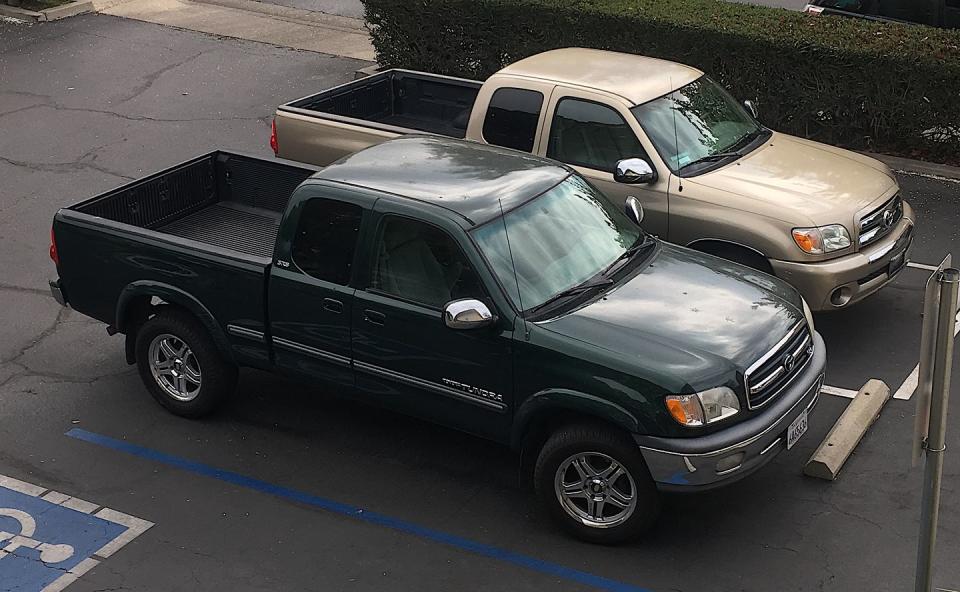Why Is the Ancient Nissan Frontier Still Popular?

Back in 2005, Barack Obama was in the first months of his first term as a United States senator. No one kept up with the Kardashians. And no one had an iPhone because iPhones didn’t exist. My kids were both in pre-school. It was a long time ago.
It was also the year Nissan introduced the current Frontier mid-size pickup truck.

As far as consumer vehicles go, the 2020 Nissan Frontier is now the oldest one in continuous production for sale in the United States. This new model year is the Frontier’s 16th. If it could pilot itself, the Nissan Frontier would be eligible for a driver’s license in most states.
GM’s full-size vans have been around since 1995, but they’re strictly commercial products now. Ford’s E-Series van has received only incremental updates since 1975, but today it’s only offered as a cutaway chassis for ambulances, motor homes, and those flimsy airport shuttle buses. Nope, when it comes to consumer crustiness, it’s the Nissan Frontier that stands alone.
The Frontier actually had its second-best sales year in 2018 selling 79,646 units. That’s an average of about 218 trucks a day of a design that’s 15 years old. Maybe new doesn’t matter as much as many think. Frontier sales only peaked in 2016 when Nissan pumped out 86,926 of them. And through the first nine months of this year, 54,686 have found homes. That projects out to a slight slide off from 2018.
As I grow older, I find myself being torn between familiarity and novelty. When I was in my early thirties, every new car and truck excited me. “Wow, it’s the Kia Sephia!” I remember thinking at the first sight of that undistinguished blob. But it was something new—a fresh experience, a thing with the potential to surprise.
It wasn’t surprising. And Kiasephia sounds like a particularly itchy dermatological problem to me now.
Today, I’m more jaded. Many of the new vehicles I’m supposed to get excited over are covered in digital stuff I’ll never explore fully in my time with it, and otherwise feel remote and mediated—as if the car thinks it’s a better and more trustworthy driver than that human idiot behind the wheel. And maybe the car is right.
Last year as my son turned 16, I decided to gift him the 2000 Toyota Tundra I bought new in May 1999. With 180,000 miles on its clock it still had life left in it, but I thought it was time to treat myself to a new vehicle. I thought I’d buy a Honda Ridgeline to haul my dogs around.
But then I was poking around AutoTrader.com looking at low-mileage, first-generation Tundras much like the one I’d just given my kid. I still liked the truck, and a Lexus dealer just 140 miles away was selling a 2006 example showing only 40,000 on its odometer. At $14,000, it was about $30,000 less than I’d pay for the new Honda.
The Ridgeline is a great personal-use truck. But I still liked the first-generation Tundra. I like the exhaust note when the 4.7-liter V-8 starts up. I love how the column-mounted shifter drops into gear. And I know exactly how my left heel wears through the floor mat in about a month. When the sales guy offered to drive it up to my office, I said, “sure.”
There it was, somewhat covered in gold paint after a life baking in the Palm Springs sun, parked next to my old green Tundra at my office’s lot. Pretty much the same truck. An SR5 Access Cab featuring all the things I already knew from driving my old Tundra for 19 years. Sure it was already 12 years old, but at $14K, what could go wrong?

I chose the familiar over the novel. The old rather than the new. Some of my fading lust for newness may have been tempered by my work, which puts me in about 130 new cars every year. But more of that craving for familiarity comes from the fact that I’m in my fifties now and not in my twenties or thirties. I’ve developed a crotchetiness that I didn’t use to have. I simply don’t care as much about new as I used to.
In conversations about the new mid-engine Chevy Corvette, the one criticism that keeps coming up is that the old guys who buy Corvettes won’t like it because it’s not familiar enough. Maybe that’s true. But old guys are a moving target with the old old guys constantly replaced by new old guys.
Familiarity is a trap car companies can easily fall into. Sooner or later, those of us who love things as they are fall into actuarial irrelevance. That is, we die. And what we want doesn’t matter anymore because we’re not here to buy it.
I’m the second-oldest guy now regularly writing for Car and Driver. By Corvette market standards, I’m the new old guy. I’m a few years younger than Rich Ceppos and decades older than a newbie like Annie White. I’m young enough that I grew up with posters of Lamborghini Countaches and Ferrari Boxers on my wall, not Corvettes of the Fifties and Sixties.
I’ve always wanted a mid-engine supercar and now Chevrolet is making one I might be able to afford once my son and daughter are launched and self-sufficient. I’m hoping that will happen. Soon.
Nissan is supposedly prepping a new Frontier for 2021, which is both sad and about fricking time. I’m eager to drive it, because it will be something new. And I already miss the one that’s here now.
Familiarity and novelty both have their limits. We want things to be new, but not unrecognizable. And we want the same old thing without the oil leaks, the busted power-window switch, and the crumpled fender. I imagine Nissan is selling new Frontiers today to customers who bought one in 2005 or 2006; people who are happy to have the same thing they already know with that fresh-from-the-showroom shine. For a certain type of driver, it’s the perfect compromise: a brand-new old car.
You Might Also Like

 Yahoo Autos
Yahoo Autos 